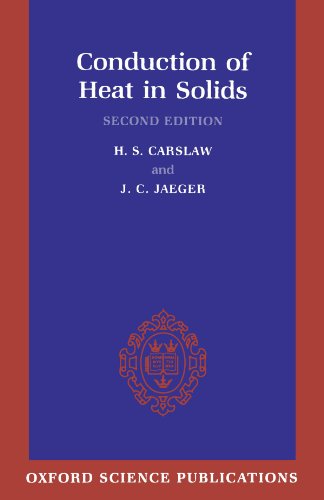Conduction of Heat in Solids book
Par mcneil gloria le mercredi, janvier 6 2016, 21:07 - Lien permanent
Conduction of Heat in Solids. H. S. Carslaw, J. C. Jaeger

Conduction.of.Heat.in.Solids.pdf
ISBN: 0198533683,9780198533689 | 517 pages | 13 Mb

Conduction of Heat in Solids H. S. Carslaw, J. C. Jaeger
Publisher: Oxford University Press, USA
For example, a spoon in a cup of hot soup becomes warmer because the heat from the soup is conducted along the spoon. (c) Metals are good conductors of heat whereas wood is a poor conductor of heat (i.e. I consulted for my work the book "heat conduction in solids" by H.S. Well, in fact there are two mechanisms of heat conduction. Heat conduction, Heat convection and Thermal Radiation. In this type of heat transfer, molecules don't move but they transfer energy using vibrations. The heat convection can occurs due to bulk motion of fluid and in contact with solid surface. More energetic molecules in a hot substance collide with less energetic molecules in a colder substance, transferring energy and therefore heat. This heat transfer can take place in three different modes viz. All solids (metals and non-metals) are made up of tiny particles called atoms, or groups of atoms called molecules. However, there is one important difference between metals and non-metals: metals contain Now, here comes the question: if molecular vibration is common to both metals and non-metals, shouldn't we expect both of them to exhibit similar heat conductivity? Conduction is most effective in solids-but it can happen in fluids. In solids, this transfer is called conduction. The book says at the introduction: "When different parts of a body are at different temperatures heat flows from the hotter parts to the cooler. An insulator).Discuss this statement with reference to the mechanism of thermal energy transfer in solids.